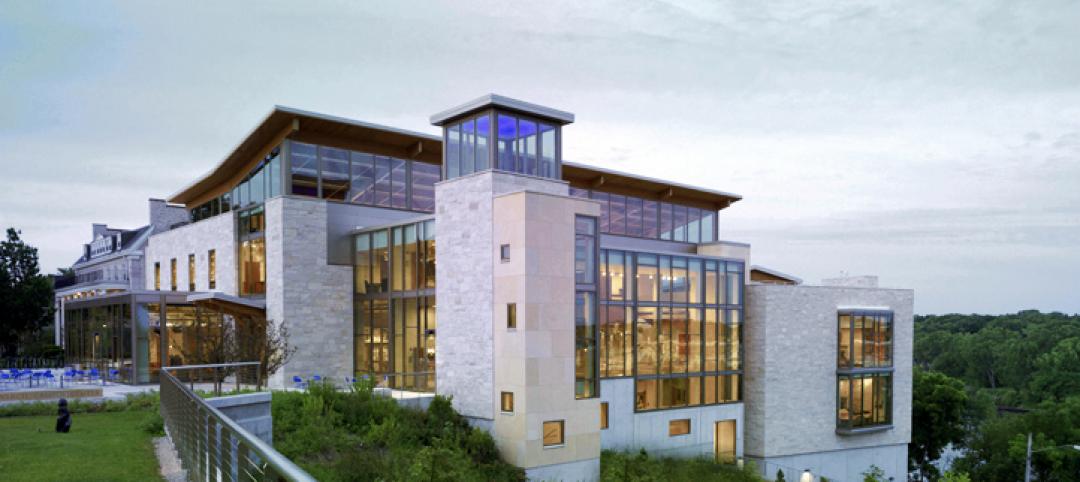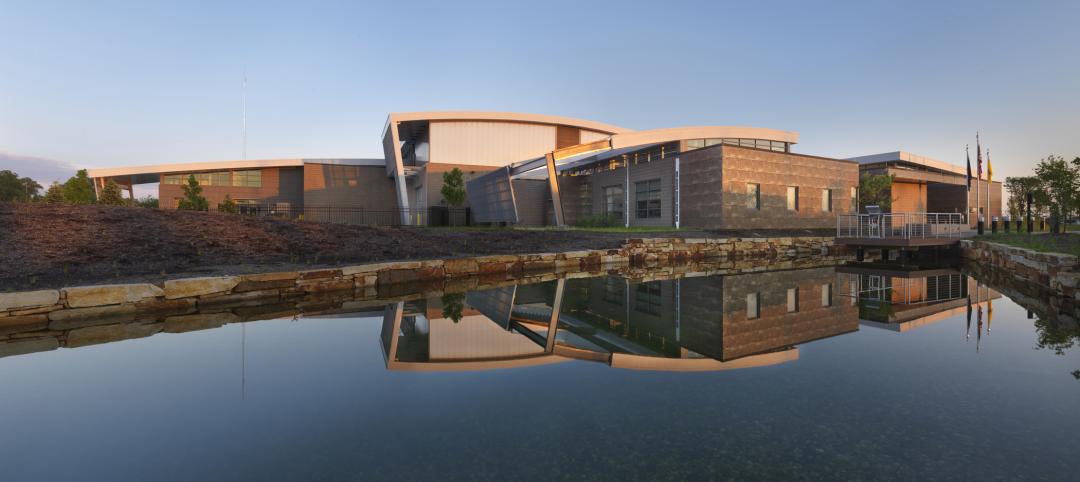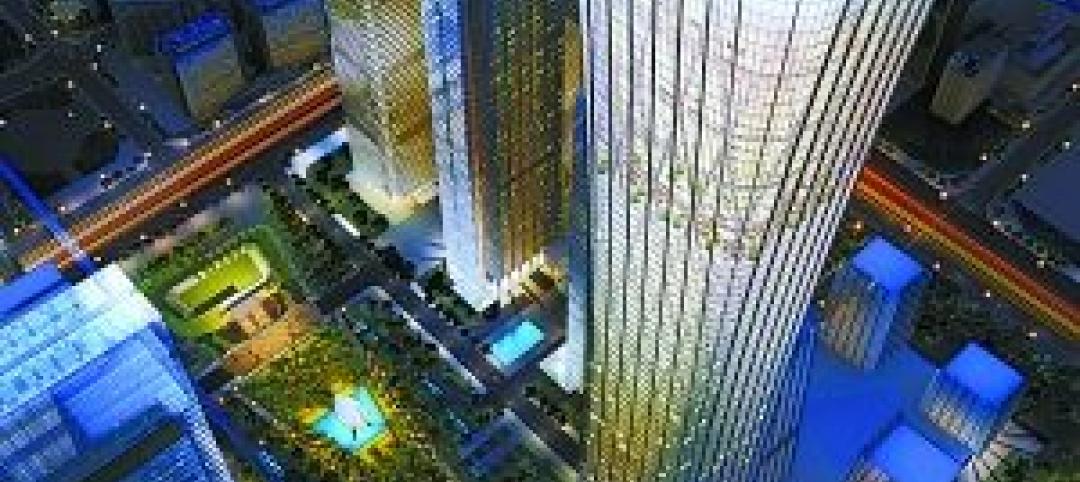Passive House, an ultra-efficient building standard that originated in Germany, has been used for single-family homes since its inception in 1990. Only recently has the concept made its way into the commercial market.
The Passive House standard requires buildings to use at least 80% less energy than a comparable conventional building, so air tightness is a must. The structure must be completely sealed against any air infiltration, at the same time preventing conditioned air from escaping. This means Building Teams must employ multiple layers of insulation in the walls, roof, and flooring, plus continuous air barriers and reliable windows and doors.
Once the building is completely sealed, a number of techniques can be engaged to regulate the temperature. Energy-recovery ventilators may be employed to keep a constant supply of fresh air circulating throughout the home. These heat exchange systems typically recycle the heat of exhaust air from kitchens and bathrooms by filtering it through the fresh air entering from the outside. This saves energy costs.
An analysis of the site and its climate also must also be completed. Effective planning of the window orientation can have a direct impact on the amount of natural daylight that will penetrate the space. Shading devices can be designed to control the amount of sun entering the space at any given time, which can contribute to heat gain.
Passive House enters the hospital sector
The Passive House concept is also spreading to other nonresidential sectors. The machinery and lighting required to run hospitals make them the largest users of energy across commercial sectors. In the Hoechst district of Frankfurt, Germany, a hospital renovation is set to become the first Passive House hospital in the world.
The state of Hesse completed a baseline study to determine the methods for executing such a large-scale PH project. The study notes that ventilation, heating and cooling, water, hygiene, and food service should all be considered when planning building systems around the Passive House standard in a healthcare setting. The study recommends the use of energy-efficient equipment, but notes that many medical devices have not yet been rated for their energy efficiency.
In multifamily buildings, the ratio of interior livable space to building envelope size is greater than that of a single-family home, so the envelope work is somewhat less demanding. Even so, the number of windows, doors, and balconies in multifamily projects means even more areas of the façade are vulnerable to air infiltration and expiration.
Despite these difficulties, commercial Building Teams are rising to the challenge. According to the Passive House Institute U.S., as of June 2014, 21 multifamily projects have been submitted for PHIUS Passive House certification: four have been fully certified, another four have been precertified and are under construction.
Stellar Apartments, Eugene, Ore., was the first multifamily project to achieve certification. Designed by Bergsund DeLaney Architecture & Planning for the St. Vincent de Paul Society of Lane County, this low-income housing project consisted of the construction of two nearly identical buildings.
The first, built to the Eugene Water and Electric Board’s Earth Advantage Standards, was designed to save 15% more energy versus a home built to code. The Building Team designed the second building to Passive House standards. The two buildings have identical floor plans, with six units on two stories, and are oriented in the same direction with similar shading. The main difference between them is the air tightness and the use of an energy-recovery system in the Passive House building.
The buildings were completed in July 2013, and are under study by students at the University of Oregon. The researchers will compare the energy use and cost savings, air quality, light quality, and acoustics of the buildings to determine whether a significant difference exists.

Stellar Apartments in Eugene, Ore., consists of two nearly identical low-income apartment buildings built to different sustainable standards. One meets the city’s Earth Advantage Program requirements, while the other (pictured above and left) is the first multifamily building to achieve Passive House certification. The Building Team included St. Vincent DePaul Society of Lane County (owner), Bergsund DeLaney Architecture & Planning, Hohbach-Lewin Inc., Poage Engineering, and Dougherty Landscape Architects. Photo: courtesy Bergsund DeLaney Architecture & Planning
The Orchards at Orenco is currently under construction in Hillsboro, Ore. Phase 1 of this affordable housing project, owned by REACH Community Development, includes 57 units, making it the largest precertified Passive House building to date.
The facility will employ traditional methods of Passive House construction—a continuous air barrier, extra insulation, and heat recovery system—to achieve up to 90% reduction in energy bills for the tenants. The roof will be light in color to reflect solar heat; it will have a foot of insulation, which is almost four times that required by the local building code.
The Building Team is using triple-pane glazed windows, with European-style tilt-turn operation. It is common for Passive House buildings to use windows made in Europe, as double-hung or slider windows manufactured in the U.S. do not offer the tightness required for PH certification.
Building Teams can apply some of the principles to multifamily projects, regardless of whether they are able to achieve full certification. Extra insulation, greater attention to detail when sealing the building envelope, and energy-efficient heating and cooling systems can have a positive effect on a building’s performance regardless of whether the building is able to carry the Passive House label.
Related Stories
| Sep 9, 2011
$22 million investment made in energy efficient building maker
The buildings use at least 25% less energy than the strictest building codes in the U.S., and as much as 80% less energy in certain parts of the country.
| Sep 8, 2011
Two promoted at ajc architects
ajc architects announced the promotion of Joshua W. Greene, AIA, NCARB, LEED Green Associate to Associate Principal of the firm. The firm also announced that Kent Rigby, AIA, has been promoted to Associate Architect.
| Sep 7, 2011
KSS Architects wins AIA NJ design award
The project was one of three to win the award in the category of Architectural/Non-Residential.
| Sep 7, 2011
Administration, Maintenance and Operations Facility in South Bend achieves LEED Platinum
The facility achieved 52 LEED points, including those for site selection, energy, materials and resources and innovation.
| Sep 6, 2011
Construction on Beijing's tallest building starts next week
The 108 floor mixed-use skyscraper consists of offices, apartments, hotels and shopping malls on the lower floors.
| Aug 31, 2011
Sebastopol, Cailf., invites designers to submit ideas for renewing city center
The goal of The Core Project is to explore how the physical presence of Sebastopol can become a more economically thriving and aesthetically vibrant place, reflecting the naturally beauty of the region and the character of the community.
| Aug 31, 2011
Wythe Confectionary renovation in Brooklyn completed
Renovation retains architectural heritage while reflecting a modern urban lifestyle.
| Aug 24, 2011
Deadline Extended: 2012 "Best AEC Firms to Work For” Awards
We’re looking for firms that create truly positive workplaces for their AEC professionals and support staff. In other words, this awards program will recognize those AEC firms that nurture and develop their most valuable asset—their people.
| Aug 23, 2011
Acoustical design education model
Pass this exam and earn 1.0 AIA/CES Discovery learning units. You must go to www.BDCnetwork.com/EnhancedAcousticalDesign to take this exam.
















